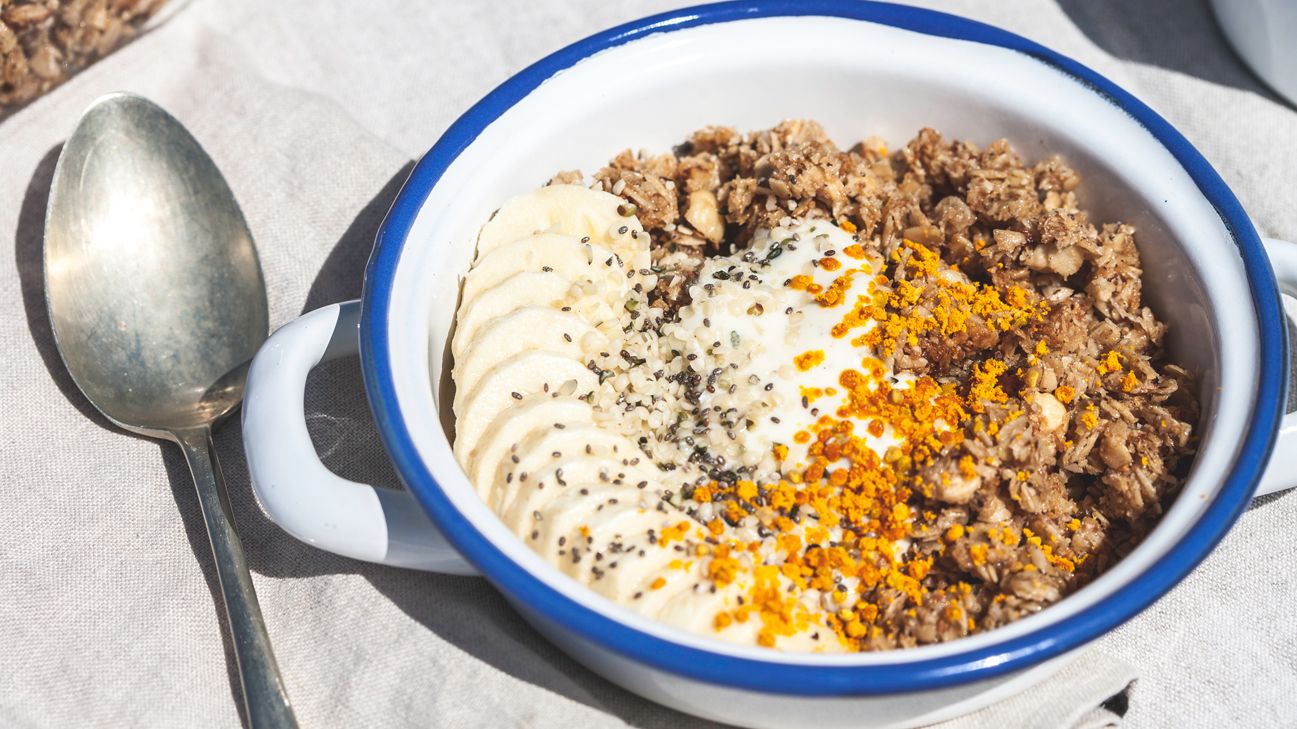Chia is going through a renaissance of sorts. The little black specks once known for growing lush bounties of Chia-Pet hair are actually edible seeds that come from the desert plant Salvia hispanica (technically part of the mint family).
Way before it became famous as a sprouting pet, the chia seed was a go-to food in Mayan diets and the basic survival ration of the Aztec army. For years, those in-the-know have praised the seed for its nutritional benefits — especially for promoting heart health.
With benefits ranging from lowering cholesterol to filling you up and preventing blood sugar spikes, this little seed deserves a closer look. Get out your magnifying glass and get ready to dive into chia and all of its nutritional benefits.

For as tiny as they are, chia seeds really have it all. Picture your perfect mate, but in teeny tiny food form.
A 1-ounce serving has nearly 5 grams (g) of protein and 10 g of fiber (up to 35 percent of our daily requirement), all for less than 140 calories. It also contains respectable amounts of B vitamins, and minerals like calcium, phosphorous, potassium, and magnesium.
Head-to-head against other highly nutritious foods, chia seeds are a clear winner. A research review showed that they have 6 times more calcium, 11 times more phosphorous, and 4 times more potassium than a glass of milk. And they’ve got more niacin than corn, soybeans, and rice.
Omega-3 unsaturated fatty acids, the good-for-you kind of fats you’ll find in fish like salmon and tuna, help ward off high blood pressure, high blood sugar (aka diabetes), and high cholesterol. That adds up to a reduced risk of developing heart disease. You’ll also find omega-3s in chia seeds — lots of them.
Chia seeds are really oily, but not in a bad way. In fact, the name “chia” comes from the Aztec language word meaning “oily.”
A research review showed that the oil of the chia seed contains 25 percent omega-3s and 75 percent omega-6s, which is a beneficial ratio for those fatty acids. Note that if you’re trying to optimize your omega-3 intake, plant sources like chia seeds are not as easily converted into the types needed by your body as animal sources like fish oil. So, you’ll still reap some benefits, but you may want to talk with your doctor or a registered dietician to see what sources they recommend for you.
Who said whole grains have to come in slices? Chia has more protein than grains like wheat, oats, and barley. And, because they’re gluten-free, people with celiac disease or a gluten intolerance don’t have to avoid them.
Amino acids are the building blocks of protein. We need them to make our bodies run smoothly. Chia seeds have 18 of them, including glutamic acid, which helps keep our brain sharp.
Harvard University says that chia has twice the fiber of bran, and 4 to 5 times the fiber of almonds or quinoa. It’s mainly the soluble kind of fiber, which slows digestion and (ahem) keeps you regular.
Slowing things down in your digestive tract has some benefits. When food digests slowly, your blood sugar stays on an even keel and you don’t get hungry again as quickly.
The Chumash, a Native American tribe that lived in southern and central California, got the memo. They ate chia seeds on long runs to deliver messages between villages. But even people who aren’t taking off on a 100-mile run can get the advantage of the extended energy boost these seeds offer.
So, you know how your body uses oxygen to make energy, and that process can generate harmful substances called free radicals that can damage your cells? No? Trust us, it does.
Free radicals are at least partly to blame for heart disease, Alzheimer’s disease, cancer, diabetes, and stroke. Antioxidants are substances that protect against these bad boys, and chia seeds are full of them. They have hefty amounts of antioxidants compared to other whole food sources — even more than the oft-praised blueberry.
Chia might just be a water bottle’s best friend. Chia seeds absorb up to 12 times their weight in water, which helps our bodies stay hydrated longer and improves overall endurance. Their magical gelling effect makes chia an excellent replacement for eggs or oil in baking.
When mixed with gastric juices (yum!), the seeds form a gel, creating a barrier to digestive enzymes so their carbohydrates break down slowly and release glucose (that’s sugar) at a steady rate.
The gel could help prevent spikes in blood sugar, unlike some other carbohydrates we know (ahem, white sugar). This “gel when wet” phenomenon also helps us feel fuller, as the seeds suck up digestive juices and expand, taking up some of the empty space that would otherwise make our bellies grumble.
Luckily, this is one protein source that’s easy to stomach, since the human body can easily digest chia seeds. Unlike other seeds, chia seeds don’t have to be ground up before eating.
And the taste? Chia seeds are quite tasteless, actually, which makes them an easy add to almost any snack or dish. Mix them with a favorite smoothie. Add them to cereal, salad, granola, or just about anything else.
Chia also makes a great thickener for soups, sauces, and desserts. Let them sit in almond milk (or other milk types) and watch it morph into a pudding-like consistency.
You can find chia seeds at health markets, online, or at many bigger chain grocery stores. There are even organically grown varieties, for the organic-inclined.

